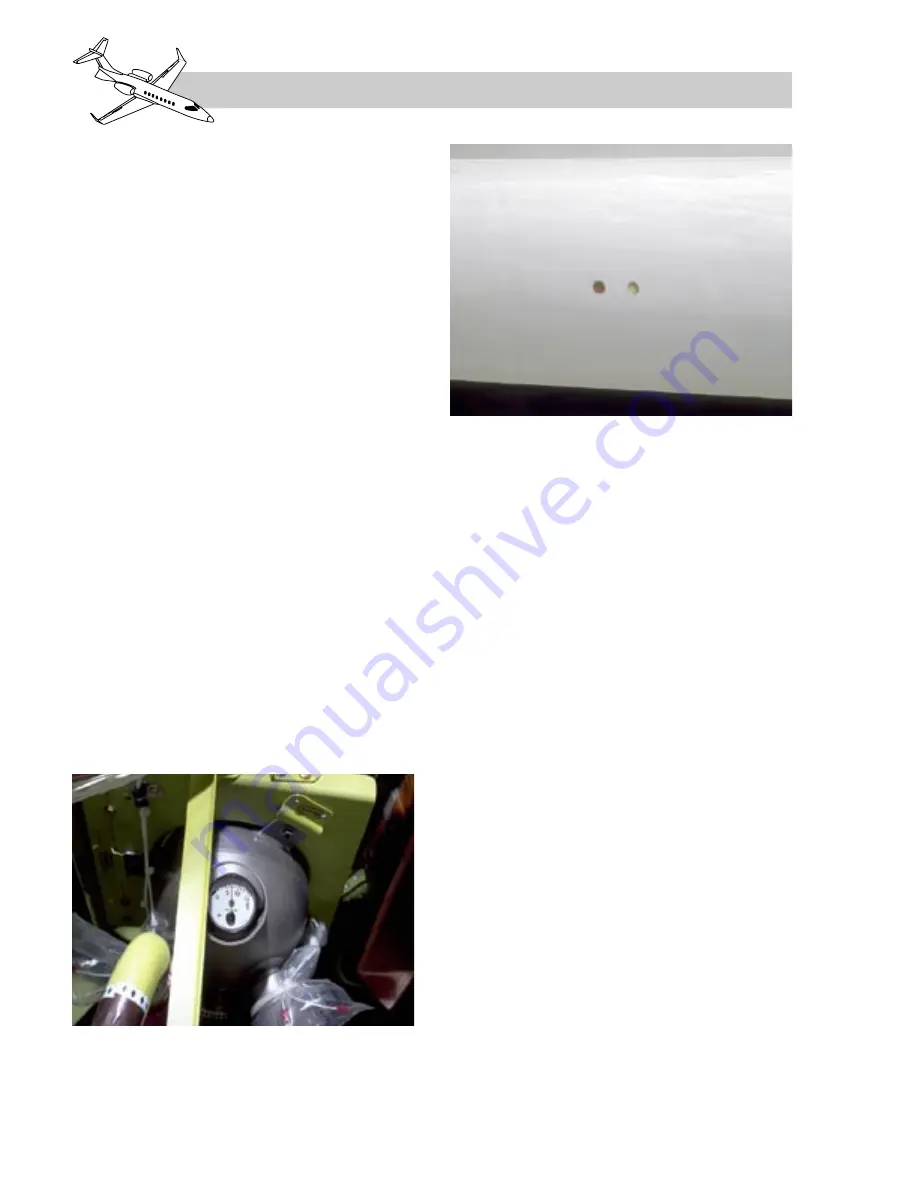
EXTINGUISHER CONTAINERS
The two fire extinguisher agent containers
(Figure 8-5) are spherical in shape and are lo-
cated on the right side in the tailcone equip-
ment bay. The containers are plumbed to each
engine cowling and provide the airplane with
a two-shot system (Figure 8-4). The contain-
ers are charged with Halon (CF3Br) bro-
motrifluromethane. The agent is non toxic
and non corrosive. Therefore, no special clean-
ing of the engine or cowling area is required
if the system has been discharged. The agent
is stored under pressure, and a pressure gage
is installed on each container. The pressure
gages indicate approximately 600 psi at 70°
F when the containers are properly serviced.
Bottle pressure should be checked during ex-
terior preflight and each should be between 400
and 800 psi.
A thermal relief valve on each container is
plumbed to a common thermal discharge port
on the outside of the fuselage aft of the tailcone
access door. The thermal relief valves will re-
lease bottle pressure at approximately 220° F.
EXTERIOR EXTINGUISHER
DISCHARGE INDICATORS
Two colored disc-type indicators are flush
mounted in the right side of the fuselage, aft
of the tailcone access door (Figure 8-6). The
red-colored disc covers the thermal discharge
port. It will be ruptured if one or both pressure
relief valves has released bottle contents over-
board. The yellow-colored disc will rupture if
either bottle is discharged by depressing the
annunciated #1 or #2 fire extinguisher ARMED
pushbuttons on the engine/fuel control panel.
The integrity of the two discharge indicators
is checked during the external preflight in-
spection.
L E A R J E T 4 5
P I L O T T R A I N I N G M A N U A L
8-6
FOR TRAINING PURPOSES ONLY
FlightSafety
international
Figure 8-6. Fire Extinguisher Discharge
Indicators
Figure 8-5. Extinguishing Agent
Containers
















































